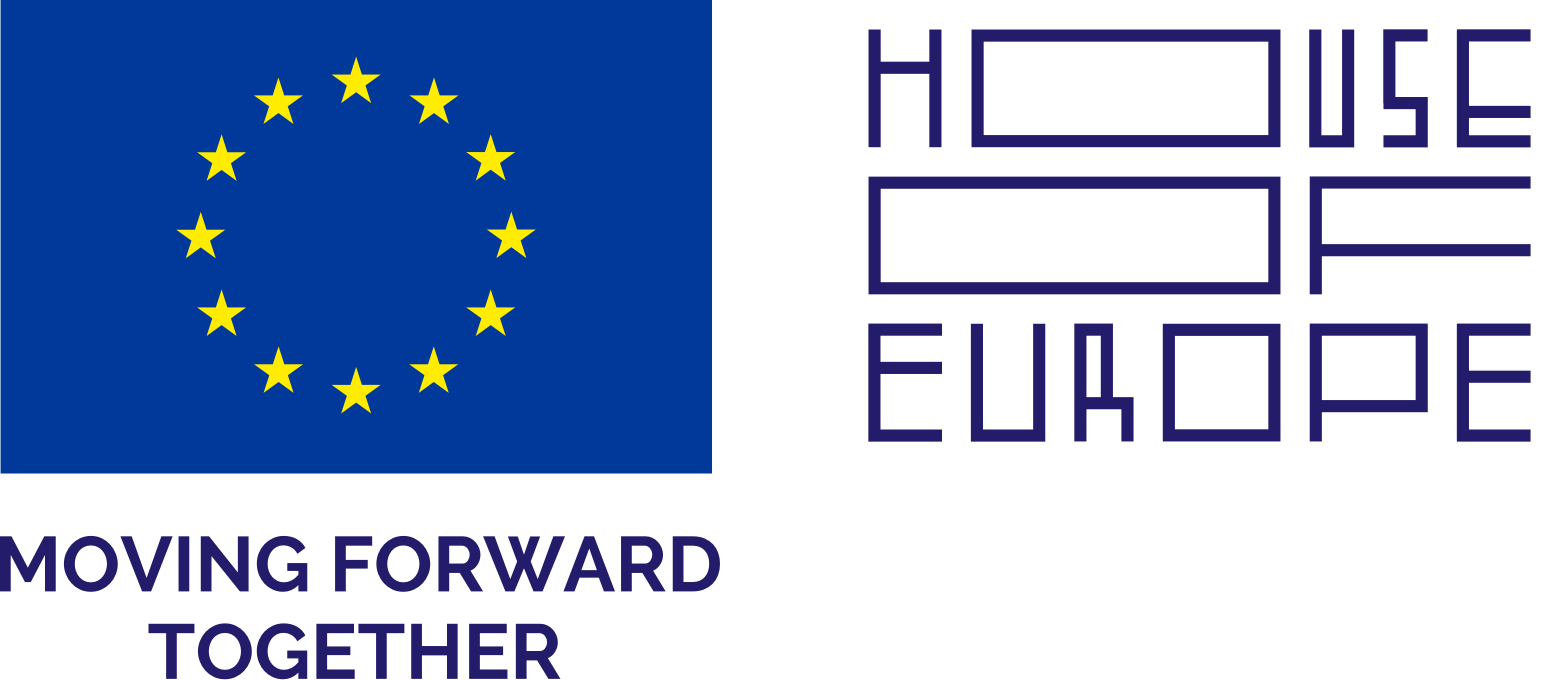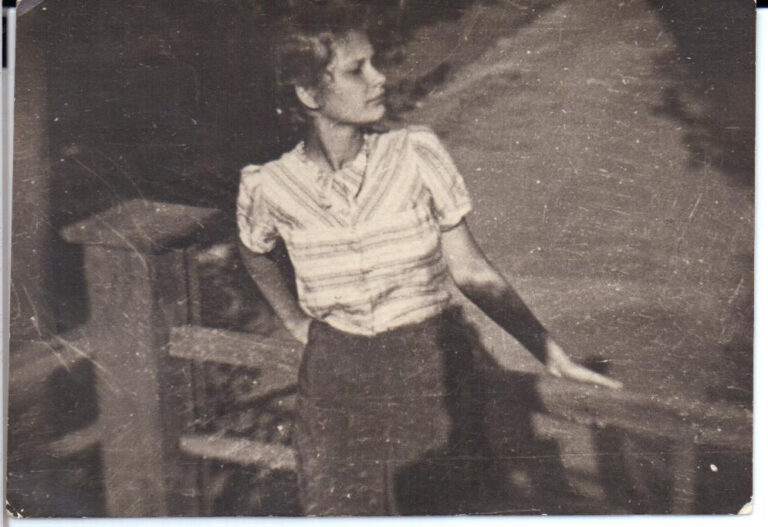

– born in 1929 in Yalta, Crimea, died in 1970 in Vasylkiv, Kyiv region, Ukraine. Ukrainian artist, public figure, one of the founders of the Sixties movement, member of the human rights movement in Ukraine in the 1960s. From 1948 to 1954 she studied at the Kyiv Art Institute (currently the National Academy of Fine Arts and Architecture) in the studio of Serhii Hryhoriev. Since 1952 she was married to the artist Viktor Zaretsky whom she created joint artworks with. During 1960-1964 she co-organized the creative youth club called “Suchasnyk” (eng.: “Contemporary”). She was twice a member of the Artists’ Union of Ukrainian SSR and equally twice expelled from it due to her active citizenship. She worked in painting, graphics, stained glass and monumental art. In November 1970, she was brutally killed. Officially, the assassins were never found. Unofficially, she was assassinated by the Soviet secret services.
From the letter of Alla Horska to Opanas Zalyvakha1 dated 19652
Monumental art is the art of a collective. Like the sea that is being created by the rivers «Me». When one of those rivers turns and spreads, it loses its force, and the sea melts. There are no executors in our monumental art. Every executor is an artist. Think of St. Michael’s Cathedral mosaics3. The golden setting around figures and flowers is laid out in a unified motion. There is not a single piece standing out. Everything is subordinate to the whole. […]
Form is content. There is no separately existing plot. […]
The color scheme of Boychukists4 is dogmatic. Namely: «Underpainting was the most crucial. The color was not the essence of artwork’s objects and events, rather a coloring». This artificiality deprived of its own basis, destroyed the synthetic nature of an image. In folk art, color always acts as an image. Hence, the disregard of folk art as the primary source. In folk art, color being a soloist in painting (as well as of course in monumental art) functions as a national category. […]
Color is the meaning, soul, history of its people and their appearance. […]
Art history – history of a form – people’s history. […]
Art history is not a stock of facts, but an advancement, a process. Art is not a stock of components, but their unity in advancement […]
People are unbreakable.
Unsent letter to Alla Horska from the co-curator of Secondary Archive Project Kateryna Iakovenko
Dear Alla,
Half a century tears us apart. You dreamt of living in a free country where human rights are protected, and no one is locked up behind bars for a voluntary choice of language, religion and individualism. You were inspired by folk art, lived by the ideas of free creativity, and created monumental panels where you examined the future.
This future has arrived. However now, exactly where you were born – is the annexed territory, and there where you created your monumental masterpieces – is a war. Most of your work is located on occupied and unrecognized territories. Art today, as it was then, has been put in jeopardy. It is once again being tested and repressed. Once again it calls for effort and courage – the ones that you and your colleagues possessed.
You stated that the power of monumental art is in the unity of a collective. After 2013, Ukrainian society felt this collective power5. Everyone who went out to the Maidans in all Ukraine’s cities were creators.
You wrote: “Everything in the world is caused by eyes being squinted (and depends on people’s ability to open them up)”. Indeed, we kept our eyes squinted for a long time, but today we try not to fear opening them up.
In your letters you wrote that you were able to work for pennies despite the bans and officials. We are facing all these today as well. But we are all really united by a belief in the power of art – its ability to withstand the crisis, to support and inspire.
I agree with your views about art history and people’s history to be advancing jointly. Our art and our society will be looking back at you.
Sincerely,
The curatorial team expresses its gratitude to the Museum of the Sixties (Kyiv) and the Central State Archive-Museum of Literature and Art of Ukraine (Kyiv) in the preparation of materials.
1Opanas Zalyvakha (1925, Husynka — 2007, Ivano-Frankivsk) — Ukrainian painter, member of the Club of Creative Youth, member of the human rights movement in Ukraine in the 1960s.2The original is stored in the Ukraine’s National Central Archive-Museum for Literature and Art, Archive of A. Horska: No 1165, description 1, file Nr. 49.
3St. Michael's Golden-Domed Monastery is a functioning Orthodox monastery in honor of Archangel Michael in Kyiv, the cathedral of the Orthodox Church of Ukraine. It was built between 1108 and 1113 and re-opened in 1999.
4Boychukists is a constellation of monumental goup of artists, students of Mykhailo Boychuk (1882, Romanivka—1937, Kyiv), formed a cultural and artistic phenomenon in the history of Ukrainian art in 1910-1930. Most members of this movement were shot dead in 1937-1938 by the Soviet authorities.
5Political protests titled Euromaidan that began in Kyiv in November 2013 with student protests and grew into a large-scale all-Ukrainian political movement.
– народилась у 1929 році у Ялті, Крим, загинула у 1970 році у місті Васильків, Київська область, Україна. Українська художниця, громадська діячка, одна із засновниць руху шістдесятництва, учасниця правозахисного руху 1960-х років в Україні. Протягом 1948–1954 років навчалась у Київському державному художньому інституті (нині — Національна академія образотворчого мистецтва та архітектури) у майстерні Сергія Григор’єва. З 1952 року була у шлюбі з художником Віктором Зарецьким, з яким створювала спільні роботи. Протягом 1960-1964 була співорганізаторкою Клубу творчої молоді «Сучасник». Двічі входила до Спілки художників УРСР та двічі була виключена через свою громадянську позицію. Працювала з живописом, графікою, вітражем та монументальним мистецтвом. Була жорстоко убита у листопаді 1970 року. Офіційно убивців не було знайдено, за неофіційною версією вбивство вчинили співробітники радянських спецслужб.
З листа Алли Горської до Опанаса Заливахи1 від 1965 року2
Монументальне мистецтво – мистецтво колективу. Як море, яке створюється річками «Я». Коли одна з тих річок повертає і розтікається, то втрачає свою силу, і море міліє. Виконавців у нашому монументальному мистецтві не існує. Кожний виконавець – митець. Згадайте мозаїки Михайлівського собору3. Золоте тло, що навколо постатей і квітів, викладено за загальним рухом. Жодного байдужого окремого шматочка. Все підпорядковано загальному – образ […]
Кольорове рішення монументальних робіт бойчукістів4 догматичне. А саме: «підмальовок вирішував усе, колір був не суттю предметів, явищ, а розкраскою». Ця штучність, позбавлена власного ґрунту, руйнувала синтетичність образу. В народному мистецтві колір завжди виступає як образ. Звідси ігнорування народного мистецтва як першоджерела. Колір, як соліст, у живописі (звичайно, і в монументальному) виступає в народному мистецтві як національна категорія. […]
Колір – зміст, душа, історія народу, його лице. […]
Історія мистецтва – історія форми – історія народу. […]
Історія мистецтва – це не нагромадження фактів, а розвиток, поступ. Мистецтво – не нагромадження компонентів, а єдність їх в розвиткові. […]
Народ незламний.
Невідправлений лист Аллі Горській спів-кураторки проєкту Secondary Archive Катерини Яковленко
Дорога, Алло,
нас з вами розділяють півстоліття. Ви мріяли жити у вільній країні, де права людини захищені, а за вільний вибір мови, віросповідання та індивідуалізм не саджають за грати. Ви надихались народним мистецтвом, жили ідеями свободної творчості. Створювали монументальні панно, у яких мислили про майбутнє.
Це майбутнє настало. Але нині, саме там де ви народились — анексована територія, а там де створювали свої монументальні шедеври — йде війна. Більшість з ваших робіт знаходиться на окупованій і невизнаній території. Мистецтво сьогодні, як і тоді, опинилось у небезпеці. Воно знов піддається випробуванням та репресіям. Воно знов вимагає сил та мужності — таких, якими володіли ви та ваші колеги.
Ви говорили про те, що сила монументального мистецтва — у єдності колективу. Після 2013 року українське суспільство відчуло цю колективну силу5. Кожен та кожна, хто виходив на Майдани по всіх містах України — були творцями.
Ви писали: «Все на світі від примружених очей. (Від здібності людей їх відкривати)». Ми дійсно довгий час тримали очі примруженими, але сьогодні намагаємось не боятись їх відкривати.
У своїх листах ви пишете, що здатні були працювати за копійки, попри заборони та функціонерів. З усім цим ми також стикаємось сьогодні. Але нас дійсно всіх об’єднує віра у силу мистецтва — його здатність переживати кризи, підтримувати та надихати.
Я погоджуюсь з ваши думками, що історія мистецтва та історія народу розвиваються спільно. Наше мистецтво і наше суспільство пам’ятатиме про вас.
Сердешно,
Кураторська команда висловлює вдячність Музею шістдесятництва (Київ) та Центральному державному архіву-музею літератури і мистецтва України (Київ) у підготовці матеріалів.
1Опанас Заливаха (1925, Гусинка—2007, Івано-Франківськ) — український живописець, член Клубу творчої молоді, учасник правозахисного руху в Україні 1960-х років.2Оригінал тексту зберігається у ЦДАМЛМУ, архів А.Горської: ф. No 1165, опис 1, справа No 49.
3Михайлівський Золотоверхий монастир — діючий православний монастир на честь Архангела Михаїла в Києві, кафедральний собор Православної церкви України. Побудовано протягом 1108 — 1113 років, наново відкрито у 1999 році.
4Бойчукісти — плеяда художників-монументалістів, учнів і послідовників Михайла Бойчука (1882, Романівка — 1937, Київ), утворили культурно-мистецьке явище в історії українського мистецтва у 1910–1930-х роках. Більшість представників цього руху була розстріляна у 1937-1938 роках радянською владою.
5Йдеться про Євромайдан — політичні протести, що розпочались у Києві у листопаді 2013 року зі студентських виступів та переросли у масштабний всеукраїнський політичний рух.